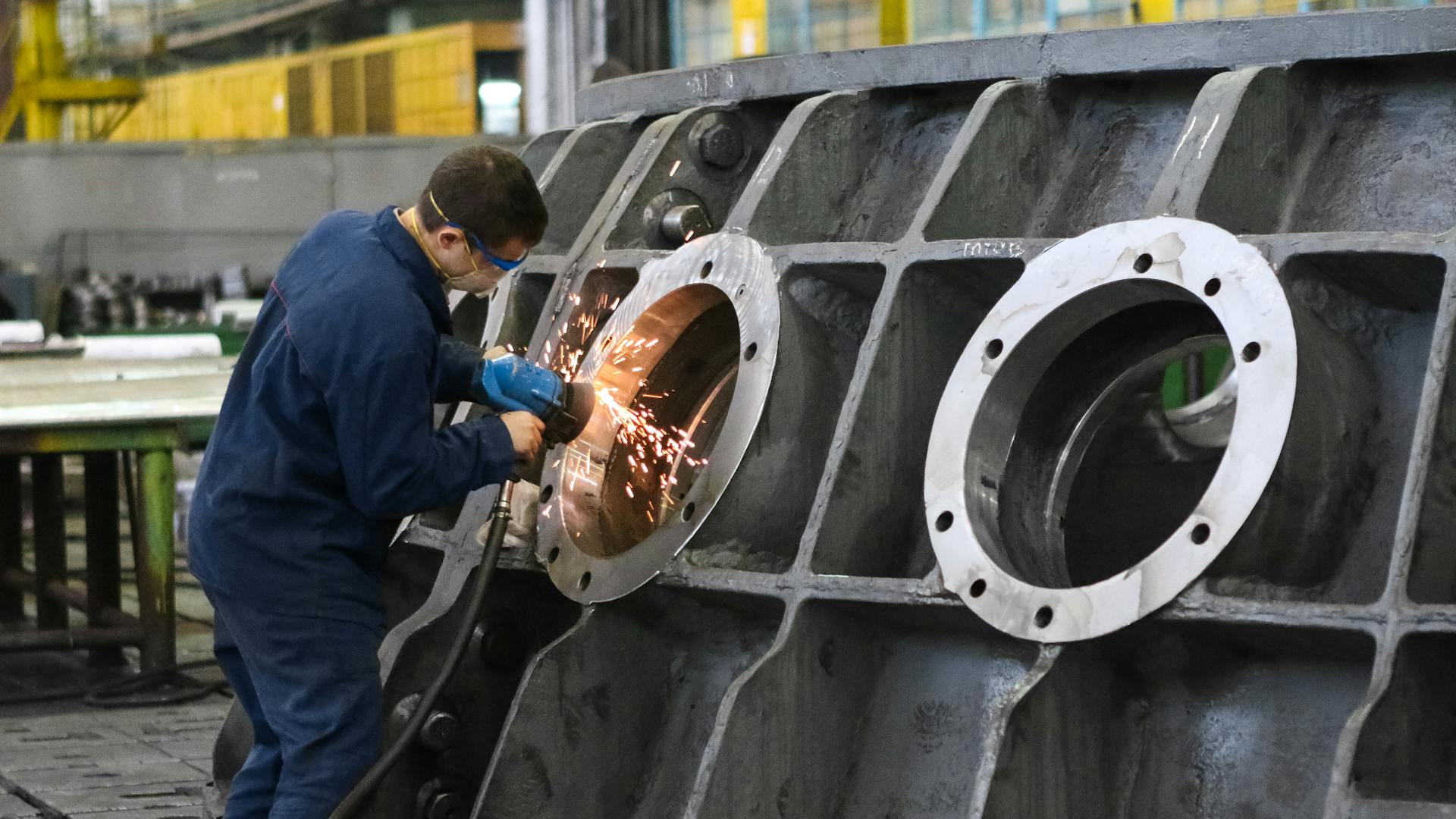Encompassing a wide range of high-risk industries, from construction to manufacturing, industrial safety goggles are a vital piece of protective equipment. In this comprehensive guide, we will walk you through the essential steps for selecting the best eye protection gear for your specific workplace needs. From understanding the different types of hazards to considering the most effective lens materials, we will cover all the crucial details to ensure you are equipped with the best and most effective eye protection gear to keep you safe on the job. No matter what high-risk industry you work in, this guide will provide the knowledge and expertise to help you make informed decisions when it comes to selecting the best industrial safety goggles for your needs.
Key Takeaways:
- Functionality is Key: When selecting industrial safety goggles, prioritize functionality over aesthetics. Look for goggles that provide the highest level of protection and visibility for your specific industry’s risks.
- Comfort and Fit Matter: Opt for safety goggles that are ergonomically designed to ensure a secure and comfortable fit. Proper fit is crucial in preventing any slippage or discomfort that could compromise safety.
- Regulations and Standards: Ensure that the safety goggles you select meet the necessary industry regulations and standards for eye protection. This will guarantee that the goggles offer the level of protection required for your high-risk work environment.
Understanding the Hazards
While working in high-risk industries, it is crucial to have a thorough understanding of the potential hazards that can pose a threat to the eyes. Whether it’s flying debris, chemicals, or intense light, the eyes are vulnerable to a wide range of dangers in the industrial environment.
Types of Eye Hazards in Industrial Environments
To protect the eyes effectively, it’s important to first identify the types of hazards present in the industrial setting. Some common eye hazards include chemical splashes, flying debris, intense light, thermal hazards, and radiation exposure. Any one of these hazards has the potential to cause serious and irreversible damage to the eyes.
- Chemical splashes: Exposure to corrosive chemicals can cause severe damage to the eyes.
- Flying debris: Impact from loose particles or objects can lead to serious eye injuries.
- Intense light: Welding, cutting, or lasers can emit strong light that can harm the eyes.
- Thermal hazards: High temperatures and heat sources can cause burns to the eyes.
- Radiation exposure: Exposure to UV, infrared, or other forms of radiation can be damaging to the eyes.
Importantly, understanding the specific hazards present in a particular industrial environment is crucial for selecting the most appropriate eye protection gear.
Assessing Risk Levels
Any industrial setting will have varying degrees of risk associated with eye hazards. It is essential to assess the risk levels to determine the level of protection required. Factors such as the frequency and intensity of the hazards, as well as the proximity of workers to the potential dangers, must be taken into account when assessing the risk levels.
Assessing the risk levels will help in determining the appropriate level of protection needed for the eyes, ensuring the safety of workers in high-risk industrial environments.
Selection Criteria for Industrial Safety Goggles
The safety and protection of workers in high-risk industries is of utmost importance. When it comes to selecting the best industrial safety goggles, there are several key criteria to consider. The right pair of safety goggles can make all the difference in preventing eye injuries and ensuring a safe work environment.
Material and Durability Standards
The material and durability of safety goggles are crucial factors to consider when making a selection. The safety goggles should be made from high-quality, impact-resistant materials such as polycarbonate or Trivex. These materials are known for their durability and ability to withstand high-velocity impacts, making them ideal for high-risk industries such as construction, manufacturing, and chemical processing.
Lens Specifications for Varied Industrial Needs
For industrial safety goggles to effectively protect the eyes, it’s important to consider the specific lens specifications for varied industrial needs. Different industries may require different types of lenses, such as clear, tinted, or anti-fog lenses. For instance, anti-fog lenses are essential for industries where workers are exposed to extreme temperature changes or humid environments, as they help maintain clear vision and prevent fogging.
Selection criteria for industrial safety goggles also includes fit and comfort considerations. It’s important to choose safety goggles that provide a secure and comfortable fit for prolonged wear. Durability and resistance to scratching or chemical exposure are also important factors to consider in ensuring the long-term effectiveness of the safety goggles.
Compliance and Certification
After selecting the right industrial safety goggles for your high-risk industry, it is crucial to ensure that they meet the necessary compliance and certification standards. Compliance with safety standards ensures that the eye protection gear will provide adequate protection in hazardous working environments.
National and International Safety Standards
To ensure that the industrial safety goggles meet the required standards, it is essential to verify that they comply with both national and international safety standards. National standards are set by regulatory bodies in each country, while international standards are developed by organizations such as the International Organization for Standardization (ISO) and the American National Standards Institute (ANSI).
It is important to note that different industries may have specific safety standards that must be met. For example, the construction industry may require compliance with the Occupational Safety and Health Administration (OSHA) standards, while the healthcare industry may require compliance with the Food and Drug Administration (FDA) standards.
How to Verify Authentic Certifications
The authenticity of the certifications for industrial safety goggles can be verified through a few key steps. The first step is to ensure that the goggles are marked with the appropriate certification labels, such as the ANSI Z87.1 or EN166 markings. Next, it is important to verify the authenticity of the certifications by checking with the certifying body or regulatory agency.
The certifying body or regulatory agency will be able to provide confirmation of the authenticity of the certifications. Additionally, it is important to check for any expiration dates on the certifications to ensure that the eye protection gear is still compliant with the standards.
Maintenance and Care
Not giving proper attention to the maintenance and care of your industrial safety goggles can lead to compromised protection and potential hazards in high-risk industrial environments. It is crucial to follow cleaning and storage guidelines to ensure the longevity and effectiveness of your eye protection gear.
Cleaning and Storage Guidelines
On a regular basis, industrial safety goggles should be cleaned with mild soap and water to remove any dirt, debris, or chemical residue that may have accumulated during use. After cleaning, ensure that the goggles are completely dry before storing them in a clean, dry place away from direct sunlight and harsh chemicals. Proper storage and cleaning practices are essential for maintaining the integrity of the goggles and maximizing their protective capabilities.
Regular Inspection and Replacement Schedules
For optimal safety, it is imperative to implement regular inspection and replacement schedules for industrial safety goggles. Inspect the goggles for any signs of damage, such as cracks, scratches, or loose parts, and replace them immediately if any issues are detected. Regular inspection and replacement schedules are critical in ensuring that the goggles continue to provide adequate protection for the wearer.
Guidelines for regular inspection and replacement schedules should be clearly outlined in the safety protocol of high-risk industries. It is recommended to conduct thorough inspections at least quarterly and replace the goggles as needed to maintain a high level of safety standards. Adhering to these guidelines will reduce the risk of potential accidents and injuries in the workplace.
Industrial Safety Goggles 101 – A Step-by-Step Guide To Selecting The Best Eye Protection Gear For High-Risk Industries
Conclusively, selecting the right industrial safety goggles is crucial for ensuring the protection of workers in high-risk industries. By following the step-by-step guide provided in this article, employers and workers can make informed decisions when it comes to choosing the best eye protection gear. From understanding the different lens materials and coatings to considering the specific hazards present in the work environment, this guide offers comprehensive insights to help mitigate the risk of eye injuries. Ultimately, investing in high-quality safety goggles is a non-negotiable aspect of creating a safe and secure workplace for all employees.
Industrial Safety Goggles 101 – A Step-by-Step Guide To Selecting The Best Eye Protection Gear For High-Risk Industries
Q: Why are industrial safety goggles important in high-risk industries?
A: Industrial safety goggles are important in high-risk industries because they provide essential eye protection against various hazards such as flying debris, chemicals, and intense light. They help prevent injuries and potential vision loss, ensuring the safety and well-being of workers in industrial settings.
Q: What factors should I consider when selecting industrial safety goggles?
A: When selecting industrial safety goggles, consider factors such as the level of impact protection needed, the type of hazards present in the workplace, compatibility with other personal protective equipment, comfort, and fit. It’s crucial to choose goggles that meet the required safety standards and provide adequate coverage for the eyes.
Q: How do I properly maintain and care for industrial safety goggles?
A: Proper maintenance and care for industrial safety goggles involve regular cleaning with mild soap and water to remove dirt and debris. Inspect the goggles for any signs of damage, such as scratches or cracks, and replace them if necessary. Store the goggles in a clean, dry place when not in use, and avoid exposing them to harsh chemicals or extreme temperatures.






